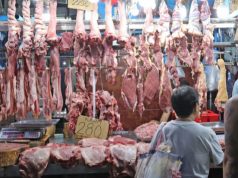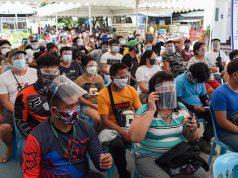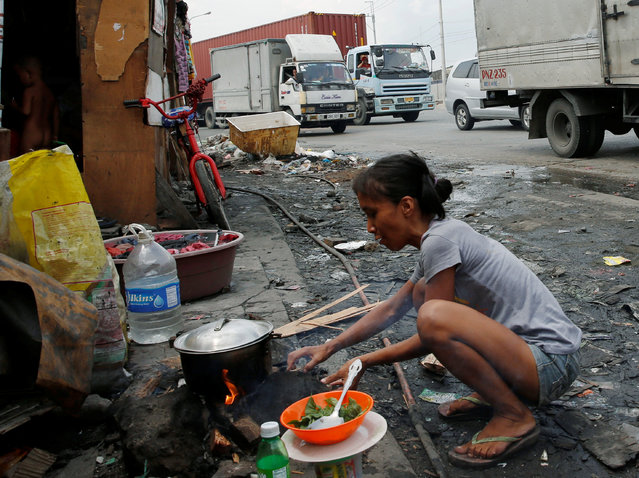
MANILA, Philippines — Some 10 million, or 44 percent of Filipino families, considered themselves “mahirap,” or poor, in the last quarter of 2017, a three-point decline from the 47 percent, or 10.9 million families, who said they suffered poverty in the previous quarter, results of the latest survey of the Social Weather Stations showed.
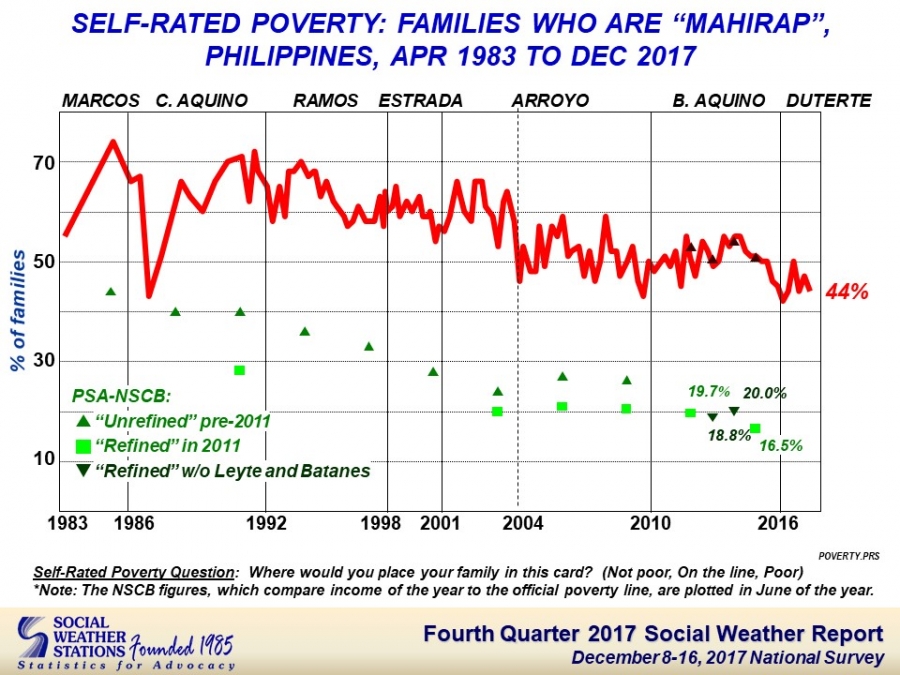
But SWS noted that “this gives an average Self-Rated Poverty of 46 percent for all quarters of 2017,” two points higher than 2016’s “record-low” 44 percent.
In SWS’ first quarter survey last year, 50 percent of families rated themselves poor. This slid to 44 percent in the second quarter.
As for “food-poor” families, or those rating their food as mahirap, SWS said this remained unchanged at 32 percent (7.3 million) in December from September (7.4 million).
“This gives an average Self-Rated Food Poverty of 33 percent for the year 2017, 2 points above the record-low 31 percent of 2016,” SWS said.
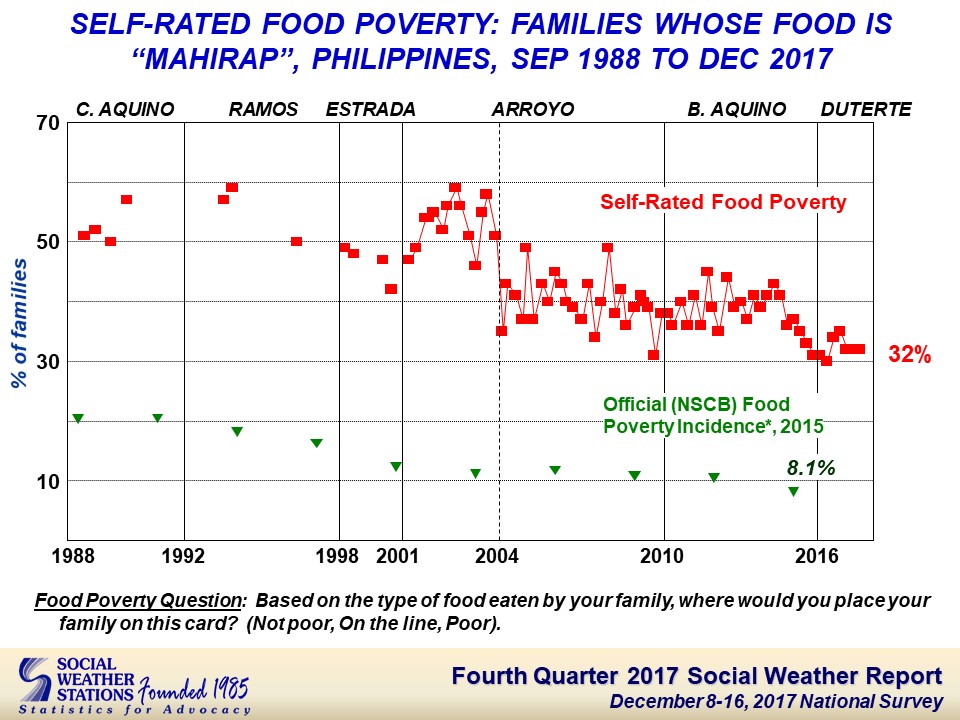
Earlier in the year, “the proportion of Self-Rated Food Poor families was 35 percent in March and 32 percent in both June and September,” it added.
The polling firm attributed December’s 3-point decline in self-rated poverty to a 10-point decrease in Balance Luzon, and slight dips in Metro Manila and the Visayas, offset by a 7-point increase in Mindanao, from September’s 45 percent to December’s 52 percent.
The averages for the whole year wee 43 percent for Balance Luzon, three points higher than the 40 percent in 2016; a record-low average of 31 percent for Metro Manila, one point down from 2016’s 32 percent; 58 percent for the Visayas, up three points from 55 percent in 2016; and 52 percent for Mindanao, up a point from 51 percent the previous year.
The December survey also saw poor households placing their “self-rated poverty threshold,” or the monthly budget for household expenses needed to elevate them from poverty, at 15,000. This made for an unchanged median “self-rated poverty gap,” or the amount they need to meet the threshold, of P5,000.
Meanwhile, respondents placed the national median “self-rated food poverty threshold,” or the monthly budget that a food-poor household needs to stop considering its food as poor, at p6,000; and the national median “self-rated food poverty gap,” the amount they lack in monthly food expenses, at P3,000.
The non-commissioned survey was conducted from December 8 to 16 using face-to-face interviews of 1,200 adults (household heads) nationwide with sampling error margins of ±2.5% for national percentages, and ±6% each for Metro Manila, Balance Luzon, Visayas, and Mindanao.




